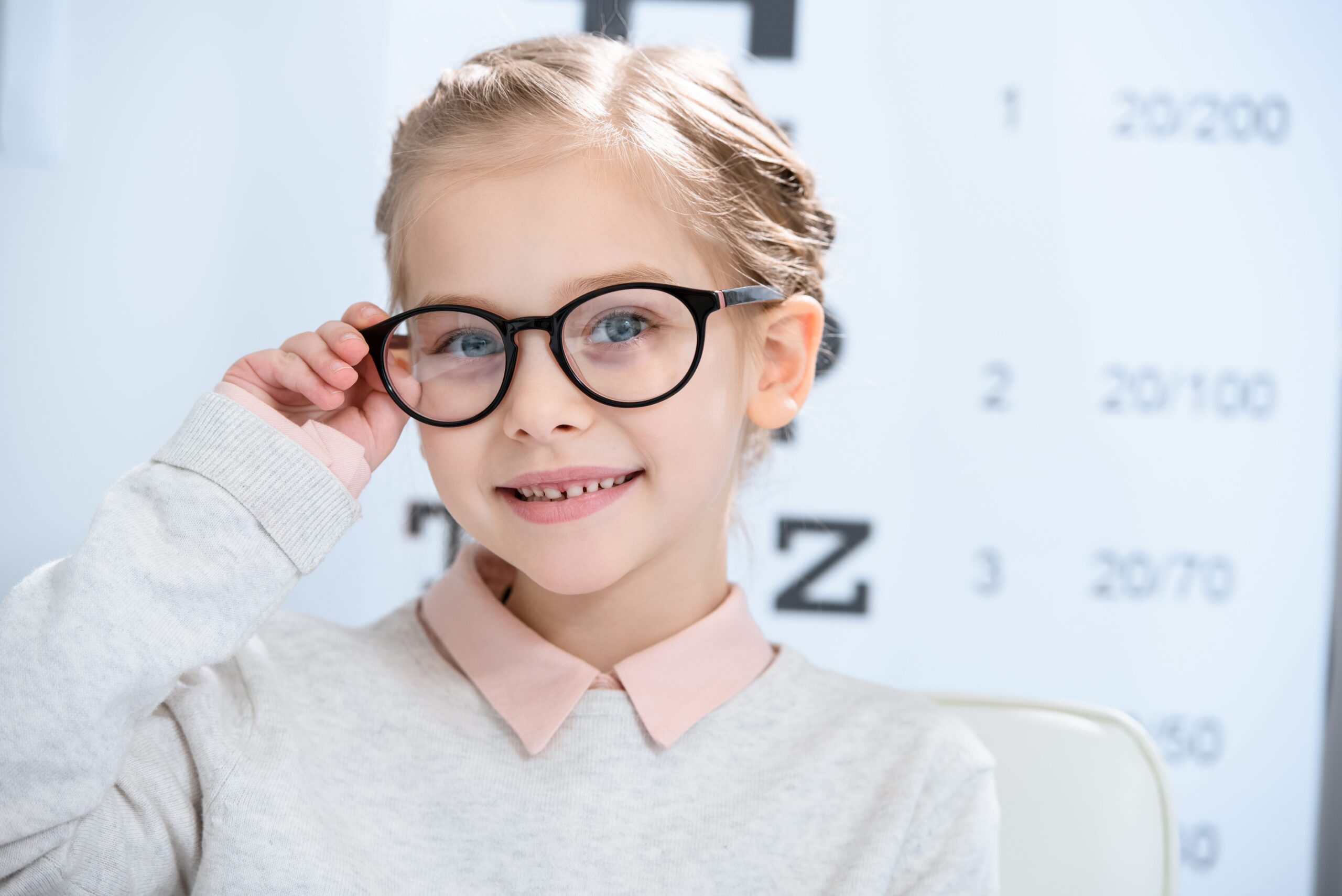

Newborns can see colors and objects up to 12 inches away, and their vision gets progressively sharper as they get older. By the time they reach school age, children should possess clear, comfortable vision at all distances. But problems can develop as your child’s vision matures. Most childhood vision problems emerge between 18 months and 4 years old.
The most common vision problems affecting children are refractive errors, amblyopia and strabismus.
Refractive errors occur when the eye can’t focus light entering the eye onto the retina, the thin layer of nerve tissue lining the back of the eye. The retina organizes the light into nerve signals, which it sends to the brain to create visual images. When light isn’t focused on the retina properly, the images appear blurry. There are three main refractive errors: myopia, hyperopia and astigmatism.
With myopia, the eyeball is longer than normal or the cornea, the clear front part of the eye, is curved too steeply. This causes the light to focus in front of the retina instead of directly on it. As a result, your child sees near objects more clearly than objects far away. Myopia is also called nearsightedness.
With hyperopia, or farsightedness, the situation is reversed. Your child can see objects in the distance clearly but near object6s are blurry. In cases of hyperopia, the eyeball is shorter than normal or the cornea isn’t curved sufficiently, and the point of focus falls behind the retina.
Astigmatism is an imperfection in the shape of the cornea or lens of the eye. Instead of being round like a ball, the cornea with astigmatism is shaped more like a football, which distorts the light focusing on the retina. With astigmatism, vision is blurry at all distances.
Refractive errors are typically corrected with glasses or contact lenses. Your child’s eye doctor can prescribe the lenses that will give your child the clearest vision.
Sometimes, there’s a breakdown in the way the brain and eyes work together, and the brain doesn’t accept the visual images coming from one eye. The brain relies on the stronger eye, and the vision in the weaker eye gets worse. This condition is called amblyopia, or lazy eye, and it is the most common cause of vision loss in children.
Amblyopia can be caused by crossed eyes (strabismus) or a difference in the refractive error between the two eyes. If that’s the case, your child’s eye doctor will likely correct those conditions first. Treatments for amblyopia include patching the stronger eye, which forces the weaker eye to work harder, and putting special eye drops in the stronger eye, which temporarily blurs the vision in that eye, forcing the weaker eye to work harder.
Strabismus, or crossed eyes, is a condition in which the eyes are misaligned; they don’t point in the same direction. One eye may point inward, outward, upward or downward. To prevent double vision, the brain may ignore the images from the misaligned eye, and that eye may not develop properly as a result. Strabismus occurs in about four out of 100 children or 4 percent.
Strabismus is caused by problems with the eye muscles, the nerves that transmit signals to the muscles or the control center in the brain that directs eye movement. It has been associated with uncorrected refractive errors, poor vision in one eye and certain medical conditions, such as cerebral palsy and hydrocephalus. Strabismus is often inherited. About 30 percent of children with strabismus have a family member with a similar problem.
Strabismus in children can result in amblyopia and can lead to permanent vision loss if not treated. Potential treatments include prescription glasses, special prism glasses, eye patching, BOTOX® injections and surgery to strengthen the weakened eye muscles.
Most vision problems, such as refractive errors, cannot be prevented. But there are steps you can take to safeguard the health of your child’s vision. Start by scheduling routine eye exams. This will enable the eye doctor to follow your child’s visual development at every stage and be there if there are any changes along the way.
Encourage healthy eating habits with a diet rich in fruits and vegetables. Fruits and vegetables contain many vitamins and nutrients that are necessary for maintaining healthy bodies, including healthy eyes.
Spend at least an hour outside every day. Playing outdoors, or even just taking a walk, helps the muscles in your child’s eyes to relax. This goes hand-in-hand with limiting screen time. Prolonger time staring at screens can cause blurry vision, focusing problems and may even increase your child’s risk for developing myopia.
Have your child wear sunglasses outdoors to protect their eyes from the harmful effects of the sun’s UV rays. They should also wear protective eyewear during sports and activities to prevent serious eye injuries. Eye injuries account for more than 1.5 million visits to the emergency room in the United States.
These are easy ways to protect your child’s vision. But if you notice that your child constantly rubs their eyes, has excessively watery eyes, is extremely sensitive to light, has trouble focusing on moving objects or has chronically red eyes, see an eye doctor. These are common signs of vision problems that may need correction.





Leave a Reply